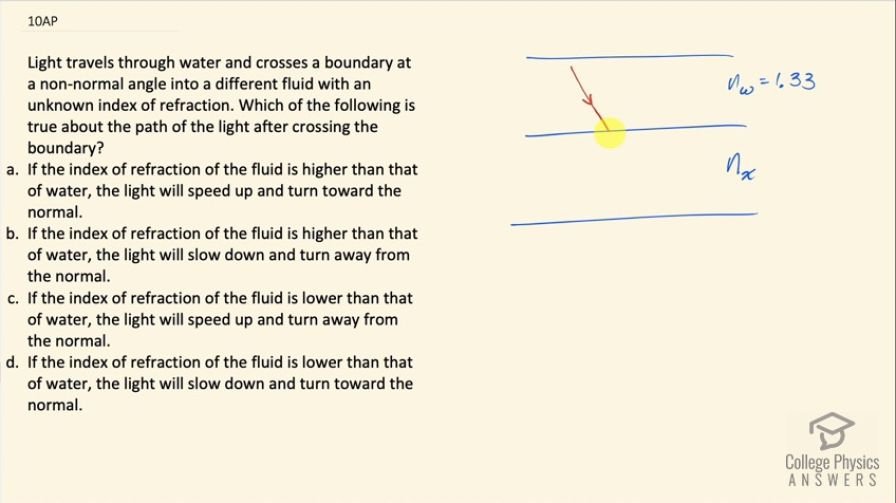Question
Light travels through water and crosses a boundary at a non-normal angle into a different fluid with an unknown index of refraction. Which of the following is true about the path of the light after crossing the boundary?
- If the index of refraction of the fluid is higher than that of water, the light will speed up and turn toward the normal.
- If the index of refraction of the fluid is higher than that of water, the light will slow down and turn away from the normal.
- If the index of refraction of the fluid is lower than that of water, the light will speed up and turn away from the normal.
- If the index of refraction of the fluid is lower than that of water, the light will slow down and turn toward the normal.
Final Answer
(c)
Solution video
OpenStax College Physics for AP® Courses, Chapter 25, Problem 10 (Test Prep for AP® Courses)

vote with a rating of
votes with an average rating of
.
Video Transcript
This is College Physics Answers with Shaun Dychko. We have a ray of light traveling through water and it hits this interface between the water and some other fluid at a non-normal angle and the question is which of the following possibilities exists for this ray traveling through the second fluid? We need to look for an option that says that either a lower index of refraction fluid will result in refraction away from the normal or a higher index of refraction will result in a refracted ray moving towards the normal. So higher index means towards the normal, lower index means away from the normal so which of these following meets that criteria? So the answer is (c) because if we have a lower index of refraction in the second fluid then the light ray will turn away from the normal because it will be speeding up and so it will go like this where this Θ r is greater than Θ i.